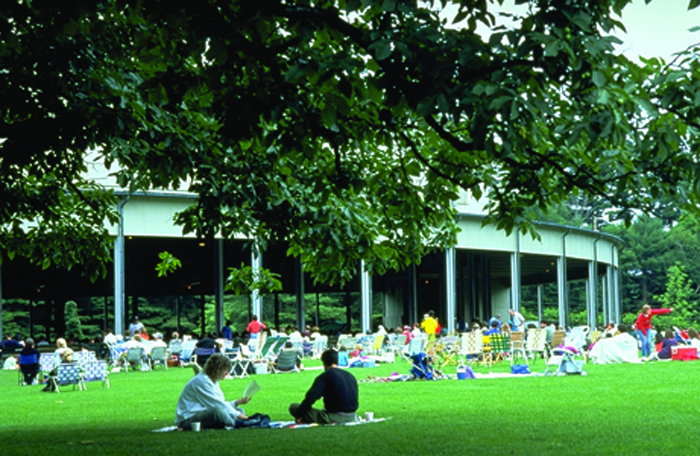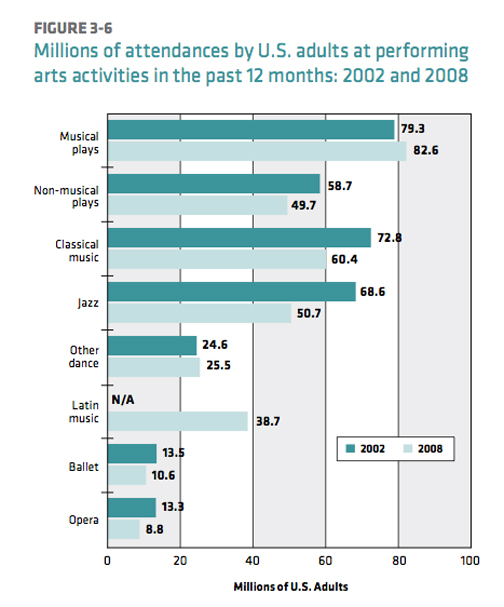For many, many years classical music lovers knew one of the best bargains could be found on Saturday morning during the Tanglewood season: the open rehearsals. Not only could you watch and listen to Sunday’s performance being shaped, but you could save a lot of money and get great seats in the shed.

Of course, during the years, the word got out and you had to get there ever more early. And if you wanted the best of the seats up front you had to be prepared for a minor sprint.
Well, Tanglewood just announced the end of those days. No more open seating. And with its new numbered reserved seats system, a raise in ticket prices. Clarence Fanto announced the sad news in Thursday’s Berkshire Eagle:
:
Starting on Saturday, July 9, die-hard aficionados of open rehearsals will have to go the route of buying tickets in advance or at the gate for a reserved seat — just like a regular concert.
They’ll also pay more this summer: $30 for seats up front in the Shed, $20 for the back sections, and $10 for a spot on the lawn.
Say a fond farewell for the $17 open rehearsal ticket.
Kim Noltemy, Tanglewood’s chief marketing and communications officer, told Fanto about Tanglewood’s concern for public safety. It turns out that several afficionados had suffered injuries during the Sprint to the Shed.
Paradoxically, while rehearsal attendance had been declining the last decade, Noltemy believes the new policy allowing patrons to pay more for precise seats has resulted in increased ticket sales for this summer’s open rehearsals.
Tanglewood’s decision reflects a national dilemma when it comes to deciding about pricing. Costs continue to rise for symphony orchestras. Well, for arts organizations in general. Salaries, rents, upkeep. While at the same time it’s difficult to maintain, let alone expand their audiences.
A 2009 demographic survey conducted by the League of American Orchestras concluded that:
Overall classical music participation rates have consistently declined between 1982 and 2008, from 12.9% to 9.3%. Unique audiences for classical music declined by 13%, or 3.3 million people, between 2002 and 2008. Paid attendance also declined by 8% between 2002 and 2007. Furthermore, losses occurred in nearly every generational cohort.
Additional analysis demonstrates that participation rates tend to decline between subsequent generations, as well as within each generation as they age. This finding challenges the widely accepted belief that people consume more classical music as they enter the “core audience” segment (e.g., age 45+) …
If recent participation trends remain unaddressed, the audience for live classical music could decline by an additional 2.7 million people, or 14%, by 2018 …
Many in Berkshire County have heralded what they believe is the future for the Berkshire economy. What they call the Creative Economy: the new jobs and economic opportunities provided by innovative collaborations between artists, designers, cultural institutions and businesses. Berkshire Creative, the organization spearheading this analysis, waxes poetic about the possibilities:
this sector includes the cultural powerhouses: museums, historic homes and theatres, and theater companies that have grown and developed into international icons attracting millions and creating jobs.
But this dream is clearly endangered by the growing decline of audiences for the arts. The findings of the League of American Orchestras is mirrored by the 2008 Survey of Public Participation in the Arts issued by the National Endowment of the Arts. While attendance for musical theater grew in 2008, there were significant declines in all other performing arts events.
Here is a chart comparing attendance in 2002 and 2008:

The reports notes:
From 1982 to 2008, audiences for performances in classical music, ballet, non-musical theater, and—most conspicuously, jazz—have aged faster than the general adult population. Even among the most educated, adults are participating less than in previous years.
A single survey cannot explain all reasons for the nationwide decline … Take one observation: since 1982, the share of 18-24-year-olds who report having had any music education in their lives (now 38 percent) has dropped by more than a third. For visual arts training, the proportion (now 21 percent) has nearly halved.
As the $17 open rehearsal ticket and the hard-earned great seats up front fade into the land of the used-to-be, let’s hope we figure out ways to grow the audience for the arts. I don’t have the answers but I’m pretty sure raising prices is not the way to go.
Mickey Friedman
June 17, 2011
